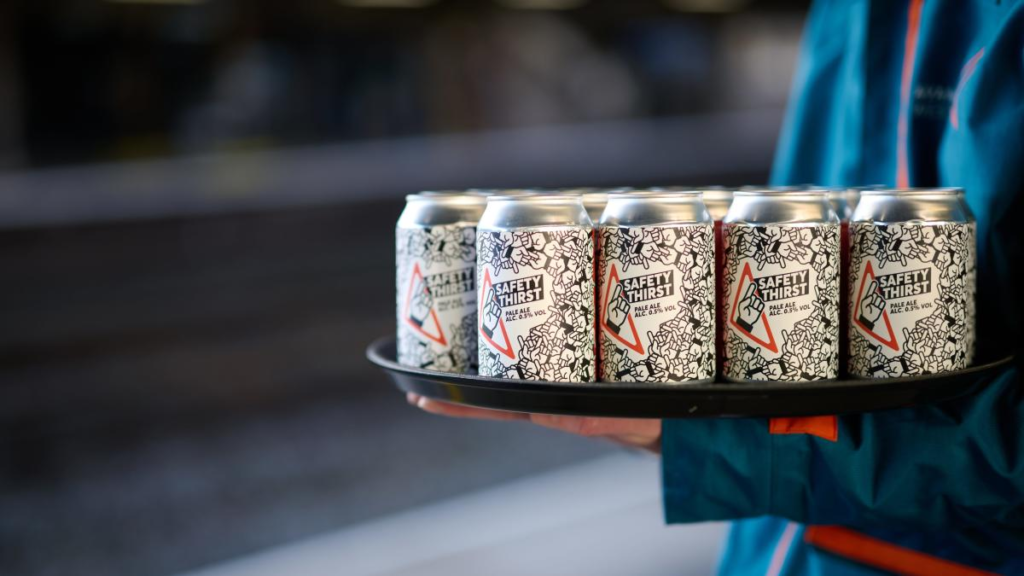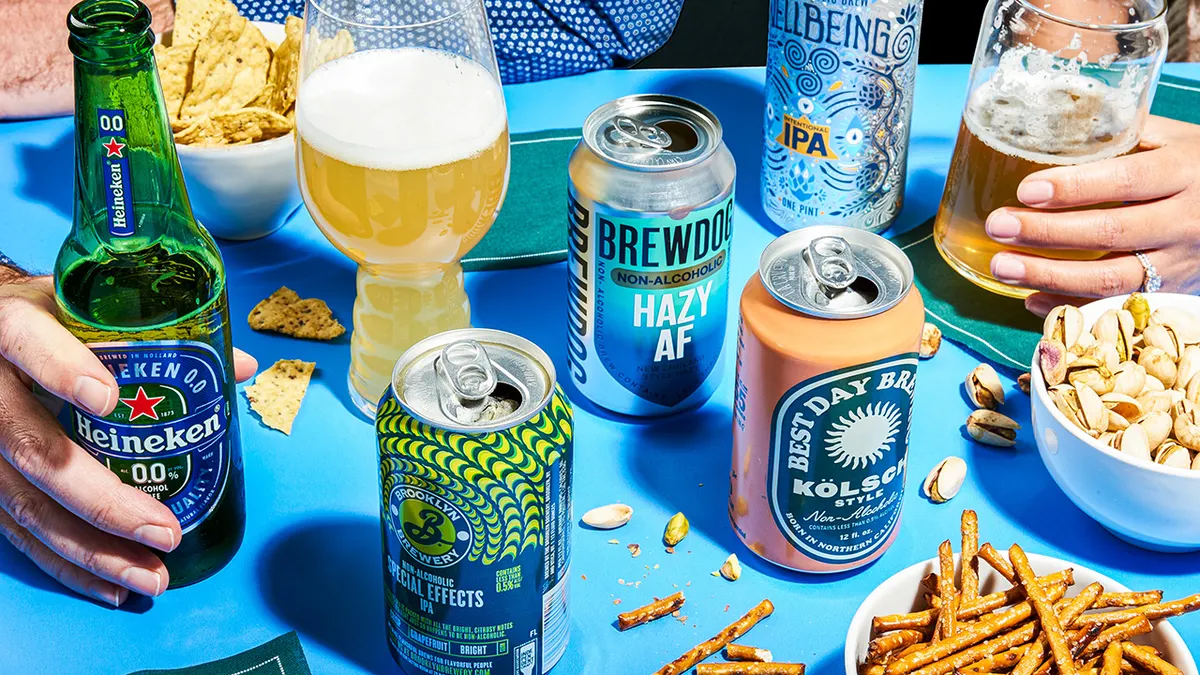The UK’s pub culture is undergoing a significant transformation. Traditionally known for pints of ale and lager, pubs are increasingly embracing no and low-alcohol beers, reflecting changing consumer preferences and a growing trend towards healthier lifestyles.
This year, sales are expected to reach a record 140 million pints, up from 120 million last year—a remarkable 14% increase. This surge highlights how pubs are evolving to become more inclusive and cater to a diverse range of patrons, including those seeking moderation or abstaining from alcohol altogether.
The Rising Popularity of No and Low-Alcohol Beers
The popularity of no and low-alcohol beers is not a fleeting trend but part of a broader societal shift towards health and wellness. In the past, non-alcoholic options were limited and often viewed with skepticism, seen as inferior to their alcoholic counterparts.
However, advancements in brewing technology have led to a significant improvement in taste and variety, making these options more appealing.
Today, 86% of pubs in the UK offer no and low-alcohol beers, and 8% serve them on draught—an increase from just 2% in 2019. This growth signifies a substantial change in the industry’s approach to non-alcoholic beverages.
Read : 6 Tourists Die After Drinking Methanol-Poisoned Liquor in Laos
Pubs, once synonymous with heavy drinking, are now places where people can enjoy a social outing without feeling pressured to consume alcohol. This inclusivity extends the pub’s appeal, ensuring that it remains a central part of British social life for a broader audience.
Read : What Happens If You Drink Expired Beer?
The British Beer and Pub Association (BBPA) emphasizes that this trend makes pubs “even more inclusive and welcoming.” The increase in low and no-alcohol options means that individuals who are moderating their intake, avoiding alcohol for health reasons, or simply choosing not to drink can still enjoy the communal atmosphere of a pub.
This inclusivity is especially significant during festive seasons when social gatherings are frequent, and the pressure to drink can be high.
The Call for Regulatory Alignment
While the popularity of no and low-alcohol beers is soaring, regulatory hurdles remain. In the UK, the threshold for an “alcohol-free” label is 0.05% ABV (alcohol by volume). In contrast, many other countries allow up to 0.5% ABV to be classified as alcohol-free.
This discrepancy creates challenges for UK brewers and can confuse consumers. Aligning the UK’s thresholds with international standards would not only benefit brewers but also enhance consumer understanding and confidence in these products.
The BBPA is advocating for this alignment, arguing that it would provide fairness for UK brewers and support the continued growth of the no and low-alcohol market.

Emma McClarkin, BBPA’s chief executive, highlights the importance of this change: “With the popularity of no and low increasing, we stand ready to support the Government in taking the necessary steps to align our no and low-alcohol descriptors with other markets.”
Such a move would allow UK brewers to compete more effectively on a global scale, driving economic growth and fostering innovation in the industry.
Luke Boase, founder of the non-alcoholic brewer Lucky Saint, echoes this sentiment. He sees an exciting opportunity for the government to support consumers by providing clear, consistent descriptors for no and low-alcohol drinks.
This clarity would not only enhance consumer trust but also contribute to public health by encouraging more people to choose alcohol-free options. Boase believes that aligning with international standards would “unlock availability, raise awareness, and drive consumption” of these beverages across the country.
The Future of Pubs and Low-Alcohol Culture
The growing popularity of no and low-alcohol beers is reshaping the traditional pub experience. Pubs are no longer just places to drink; they are becoming social hubs where people can relax, socialize, and enjoy a wide range of beverages, regardless of their alcohol content. This shift is particularly important in a time when people are increasingly conscious of their health and well-being.
For many, the decision to choose no or low-alcohol beer is driven by a desire to moderate their alcohol intake without sacrificing the social aspect of going to the pub.
These beverages offer a way to enjoy the taste and experience of beer without the negative effects of alcohol. This trend is also being fueled by younger generations, who are more health-conscious and less inclined to drink heavily compared to previous generations.
Pubs are adapting to this change by expanding their offerings and promoting no and low-alcohol options more prominently. This not only attracts a wider range of customers but also helps pubs stay relevant in a changing market.
The festive season, traditionally a time of heavy drinking, now sees more people opting for alcohol-free alternatives, ensuring that everyone can join in the celebrations without feeling excluded.

The industry’s embrace of no and low-alcohol beers also reflects a broader cultural shift towards moderation and mindful drinking. Campaigns promoting “Dry January” and other alcohol-free initiatives have gained traction, encouraging people to reconsider their drinking habits.
Pubs that offer appealing non-alcoholic options are better positioned to capitalize on this trend, attracting customers who might otherwise avoid these establishments.
The rise of no and low-alcohol beers represents a significant evolution in the UK’s pub culture. With sales expected to reach 140 million pints this year, it is clear that these beverages are more than just a passing fad—they are a response to changing consumer preferences and a growing emphasis on health and inclusivity.
By offering a wider range of options, pubs are becoming more welcoming and accessible, ensuring that everyone can enjoy the social experience they provide.
However, for this trend to reach its full potential, regulatory changes are needed. Aligning the UK’s alcohol-free threshold with international standards would support brewers, benefit consumers, and drive further growth in this market.
As pubs continue to adapt and innovate, the future looks bright for no and low-alcohol beers in the UK, offering a new way for people to enjoy one of the country’s most cherished traditions.
let’s enjoy few years on earth with peace and happiness….✍🏼🙏

